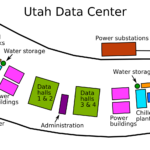“How Markets Fail: The Logic of Economic Calamities by John Cassidy is an excellent book that tackles the origins, impact and consequences of the recent economic crisis. It also provides a “What is to be done” (a la Lenin) in policy to avoid a repeat of the last crisis. The book is written in a clear and simple style. And Cassidy, not being an economist himself, has the ability to present almost any sophisticated economic theory in a fashion that is accessible to the general public.
The book has three distinctive sections which are related to each other. The first part of the book traces the evolution of the so-called “Free Market” theory starting with Adam Smith all the way to Robert Lucas. Cassidy clearly shows that 19th century free trade economist and philosophers were much more sympathetic to state intervention than Hayek and Friedman, the “evangelist”, in the late 20th century. He also shows that modern economic theory, heavily focused on the use of advanced mathematics, is not very concerned with actual economic reality as it makes sweeping assumptions in order to make its models work without any hitch. In the process, explaining reality is lost in the shuffle. Cassidy calls this set of theories “Utopian Economics” – utopian due to their inability to grasp reality -in contrast to the Utopian Economists of the 19th century who were striving to go beyond capitalism.
The second part groups a series on well-known theorists ranging from Pigou and Keynes (rivals in the 1930s) to Minsky -and including a couple of behavioral psychologists unknown to me. What brings together this group of seemingly dissimilar theorists is their clear and open attempt to elaborate theories that explain in no uncertain manner the way in which certain phenomena takes place in our world. They thus make a concerted effort to develop theories that attempt to explain real phenomena that takes place in our world. “Reality-based economics” is the term Cassidy uses to group these thinkers together.
The last section of the books centers on the onset and development of the global crises. It reads likes one of those thrillers where one knows what happened but is anxiously looking for the details -the more, the better. Cassidy also provides insights into the the minds and personalities of the key players involved in the process. What is strikingly clear is that no these players have a clear idea as to how to respond to the crisis as they were all coming from the “utopian economics” school which taught them hat such a crisis could never happen in the first place. “Socialism in our time”, as Cassidy calls it, ended up having advanced capitalist states putting 10 trillion USD to save the the global economy. Contrast this with the 100 billion USD this same countries some times reluctantly provide for development assistance.
So how is it possible that “utopian economics” has taken over economic thought and practically won the battle against “reality-based economics”? Cassidy seems to suggest this is a question of ideology and not just economic science:
“…the modern theory of the invisible hand that Friedman and others promoted explain to much with too little. At its core, it say simply: self-interest plus competition equals nirvana. There is no mention in this equation of the institutions of modern capitalism… Information asymmetries, uncertainty, copycat behavior, network effects, and disaster myopia – the invisible hand metaphor abstracts from all these awkward features of reality, too. Don’t worry, its defenders say, the market will take care of things.”
This time around it didn’t.
Will “reality-based economics” now gain the upper hand? It will certainly take more than scientific arguments to make this happen.





